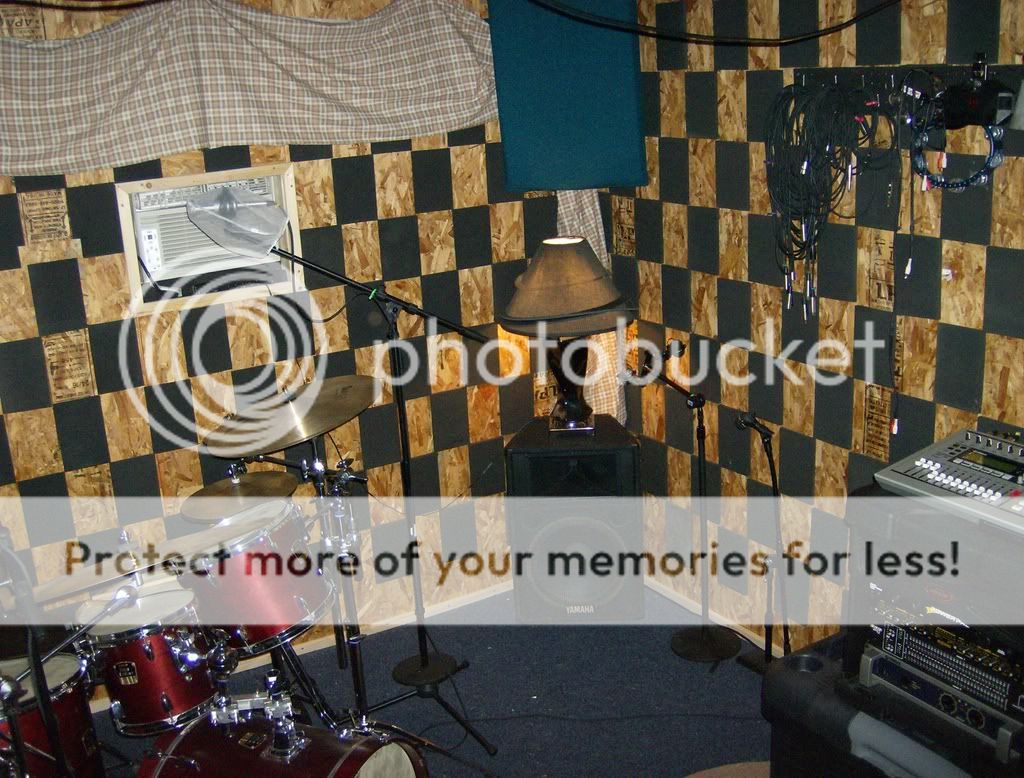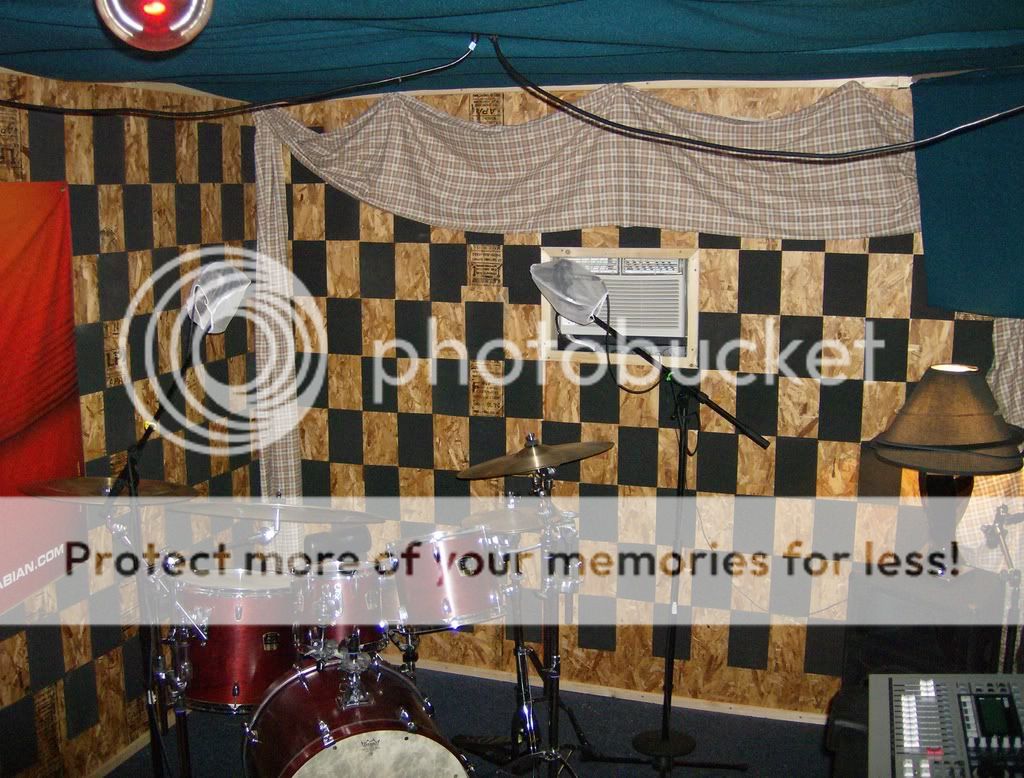You are using an out of date browser. It may not display this or other websites correctly.
You should upgrade or use an alternative browser.
You should upgrade or use an alternative browser.
Acoustic Treatment...is this okay?
- Thread starter el_guapo
- Start date
technominds
New member
$#@% it...can't make pictures small enough for this board. whatever... bye
:|
OK?
Gorty
New member
Okay? Sorry, it's just a rather involved question, and none of it means squat unless people can see the room in question. I tried resizing the pics...applying a reasonable degree of effort...no luck. Fuck it.... No offense of course.
Go to https://photobucket.com and host your picture there and then post the link here, or just make sure you compress your pics down below 64k.
Go to https://photobucket.com and host your picture there and then post the link here, or just make sure you compress your pics down below 64k.
Post the
Okay...false start. Let's try again.
Hey guys! Okay, so I have my little rehearsal space, in which I've been doing some recording. So far everything seems fine. There are problems sure, and issues I'm working through, but so far I think I'm feeling pretty okay with all of this.
My question is about the treatment on the inside of the room. I am in no position to drop any amount of cash on acoustic tiles or bass traps, but what I've done can be seen in the pics below. The tiles are 1/2 thick closed-cell neoprene. I've noticed a drastic improvement in the sound of the room, which was sounding like the inside of a bouncing basketball, but I'm wondering...are my inexperienced ears missing something?
Again...everything sounds "fine" to me, but I rarely if ever see this sort of symmetrical checker-board pattern I've implemented. So, what I'd like to know from some really experienced 'acoustic engineer' types... how #@$% up is my set up?
I recognize, there are countless variables, and without being in the room, no one can tell me exactly what I need, but I'm looking for the theory, the probabilities, the 'hey watch out fors'.... Know what I mean?
The room is 10x14x8. The walls are 8" cinder block covered in 2" closed-cell neoprene. Then there's a 4" void and 5/16" OSB, about 40% of which is covered with 1/2" thick foam. Two opposing ceiling corners have 24x30x2 panels of neoprene and one other corner has a 6' neoprene wedge. Along the long wall, and centered opposite the DAW, I have a 4'x6' curved diffuser. It's behind the Sabian banner. The ceiling is covered in a loose, draping, heavy fabric similar to burlap, but thicker.
Any advise or observations would be appreciated.
Here's the pics:



Hey guys! Okay, so I have my little rehearsal space, in which I've been doing some recording. So far everything seems fine. There are problems sure, and issues I'm working through, but so far I think I'm feeling pretty okay with all of this.
My question is about the treatment on the inside of the room. I am in no position to drop any amount of cash on acoustic tiles or bass traps, but what I've done can be seen in the pics below. The tiles are 1/2 thick closed-cell neoprene. I've noticed a drastic improvement in the sound of the room, which was sounding like the inside of a bouncing basketball, but I'm wondering...are my inexperienced ears missing something?
Again...everything sounds "fine" to me, but I rarely if ever see this sort of symmetrical checker-board pattern I've implemented. So, what I'd like to know from some really experienced 'acoustic engineer' types... how #@$% up is my set up?
I recognize, there are countless variables, and without being in the room, no one can tell me exactly what I need, but I'm looking for the theory, the probabilities, the 'hey watch out fors'.... Know what I mean?
The room is 10x14x8. The walls are 8" cinder block covered in 2" closed-cell neoprene. Then there's a 4" void and 5/16" OSB, about 40% of which is covered with 1/2" thick foam. Two opposing ceiling corners have 24x30x2 panels of neoprene and one other corner has a 6' neoprene wedge. Along the long wall, and centered opposite the DAW, I have a 4'x6' curved diffuser. It's behind the Sabian banner. The ceiling is covered in a loose, draping, heavy fabric similar to burlap, but thicker.
Any advise or observations would be appreciated.
Here's the pics:



OK. Where to start.
First, I assume you insulated with fiberglass or mineral wool behind the OSB. If not, you should. Not only does this help with isolation but also allows it to act as a bass absorber instead of a drum to a certain point.
Second, any closed cell material isn't doing much of anything for absorbtion. Any absorbtion only 1/2" thick is only a high frequency absorber ignoring the rest of the spectrum - especially with drums in the room.... Couple them both together - 1/2" and closed cell and it's likely that they're doing almost nothing.
Sorry.
Bryan
First, I assume you insulated with fiberglass or mineral wool behind the OSB. If not, you should. Not only does this help with isolation but also allows it to act as a bass absorber instead of a drum to a certain point.
Second, any closed cell material isn't doing much of anything for absorbtion. Any absorbtion only 1/2" thick is only a high frequency absorber ignoring the rest of the spectrum - especially with drums in the room.... Couple them both together - 1/2" and closed cell and it's likely that they're doing almost nothing.
Sorry.
Bryan
While I appreciate the advise...I'm not sure if you understand what 'closed-cell neoprene' is. It is used in aviation and truck manufacturing to isolate the cabin from engine noise. It is very good at reducing the transmission of sound. It is probably not used very often in other applications because of the cost...not effectiveness. What I have, happened to be free...drops from a job. Had I ordered fresh sheets of 2" neoprene. it would have cost about $4000 to do that little room.
I realize the 1/2" tiles are only good for high-frequency...that was the bouncing basketball. The diffuser, wedge, panels, and decoupled walls are for low-end.
Thanks for the help anyway.
I realize the 1/2" tiles are only good for high-frequency...that was the bouncing basketball. The diffuser, wedge, panels, and decoupled walls are for low-end.
Thanks for the help anyway.
knightfly
GrouchyOldFartOnBatteries
I understand what closed cell neoprene is, and Bryan's right - it won't do anything for absorption.
Absorption in soft materials is caused by moving air (sound waves) passing THROUGH the interstices of the material (foam has these if it's OPEN cell, and compressed fiberglass has more) - the closer the interstices, the more difficulty the air has moving through it, and more of the sound wave is converted to low grade heat. The part that's converted is no longer audible.
In the intended application, your material kills sound by DAMPING the surface it's attached to and by (slightly) adding mass. However, I don't remember seeing too many airplanes made from concrete block, and not many trucks for that matter :=)
So I'm doubtful that your 2" neoprene on concrete is adding much.
In all likelihood, the 2" neoprene may slightly improve damping of the block - but the MAIN reason you don't dislike the room sound is that you've inadvertently built several damped panel absorbers - the 1/2" foam over 5/16" OSB.
Considering the 4" air gap and approximately the same weight as plywood, you'd be looking at an absorption peak around 90 hZ, with at least a 2 octave bandwidth - since an untreated concrete block room would have unbearable bass boom, you've drastically improved your space - at least for bass control.
However, I'd bet that if you were to do a full response test in the space you'd find quite a few peaks and dips in response; but without spending money on analysis software, calibrated mic and the resultant treatments you're probably as good as it's gonna get for now.
Hope this helped... Steve
Absorption in soft materials is caused by moving air (sound waves) passing THROUGH the interstices of the material (foam has these if it's OPEN cell, and compressed fiberglass has more) - the closer the interstices, the more difficulty the air has moving through it, and more of the sound wave is converted to low grade heat. The part that's converted is no longer audible.
In the intended application, your material kills sound by DAMPING the surface it's attached to and by (slightly) adding mass. However, I don't remember seeing too many airplanes made from concrete block, and not many trucks for that matter :=)
So I'm doubtful that your 2" neoprene on concrete is adding much.
In all likelihood, the 2" neoprene may slightly improve damping of the block - but the MAIN reason you don't dislike the room sound is that you've inadvertently built several damped panel absorbers - the 1/2" foam over 5/16" OSB.
Considering the 4" air gap and approximately the same weight as plywood, you'd be looking at an absorption peak around 90 hZ, with at least a 2 octave bandwidth - since an untreated concrete block room would have unbearable bass boom, you've drastically improved your space - at least for bass control.
However, I'd bet that if you were to do a full response test in the space you'd find quite a few peaks and dips in response; but without spending money on analysis software, calibrated mic and the resultant treatments you're probably as good as it's gonna get for now.
Hope this helped... Steve
Hope this helped... Steve
Yes, thanks.
bpape - sure about that? I can easily insulate the backside of the panels, but I've been told elsewhere, that it isn't the way to go...so much seemingly conflicting info out there. I realize it's mostly because of the broad range of variables involved...and opinions.
Here's a sample of the sound. This is just overheads, two at3035's...no EQ or processing...raw tracks. This may help everyone understand the room a little. Oh...drums are wide open...no muffling at all.
...and the recording was done before the two panels and diffuser. I'll get an updated sample soon.
SAMPLE RECORDING
TexRoadkill
Audio Bum
It doesn't sound bad but there isn't much of a stereo image and the reflected highs seem a bit dead to me.
It doesn't sound bad but there isn't much of a stereo image and the reflected highs seem a bit dead to me.
Probably won't get much of a stereo image unless I pan 'em a little. I didn't want to skew anything. Like I said...no processing, including panning. Can you elaborate a bit on what you mean by reflected highs? Could you be expecting more shimmer out of the cymbals? That might be the cymbals more so than the room. I don't like cymbals that cut too much, preferring depth and spread over pitch and projection. The ride is a 24" half-cup, the hats are 14" medium AA's from the early eighties. The crash, a 19" K Dark Thin, and then a 20" HH Dark chinese. Oh...and a little 7" Mehmet splash. All dark, wet cymbals.
Oh wait...on this recording there is no chinese...it's a 19" HH Dark crash. Sorry.
Here's an updated file with the new diffuser and improve bass traps. Any better?
http://www.mediafire.com/?bbxyokk32vc
http://www.mediafire.com/?bbxyokk32vc
